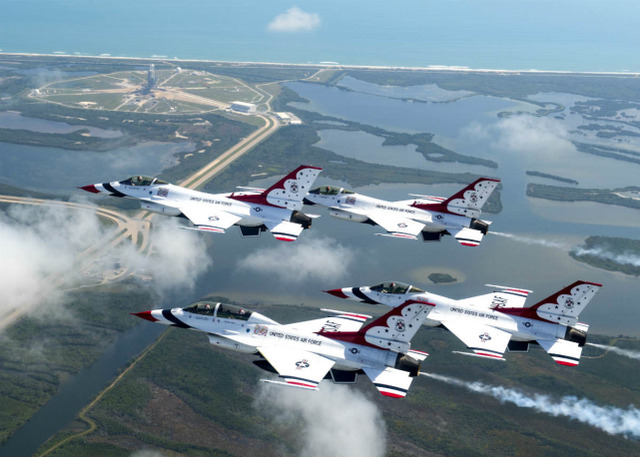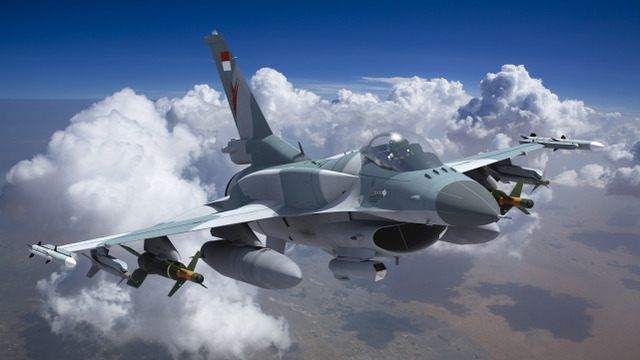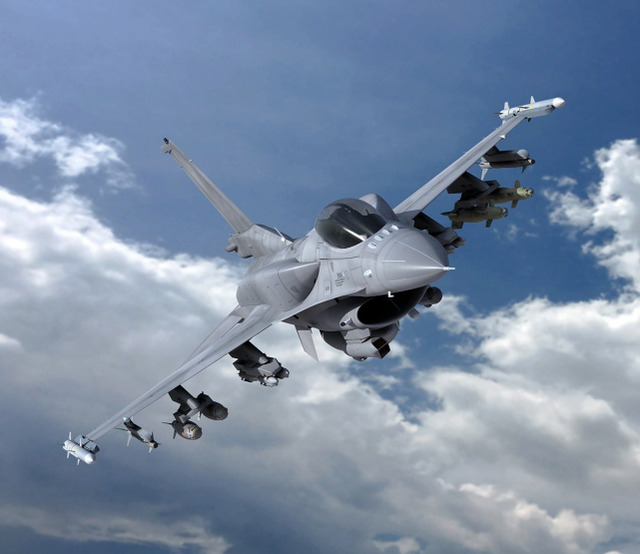January 21, several U.S. military media forwarded a news from Aviation Week, which made people fall down. The report said: the U.S. Air Force is seriously considering re-procuring the F-16.
The report said the U.S. Air Force believes the F-16’s maneuverability and combat radius surpass all potentially threatening fighters in air combat. It is capable of targeting in all-weather conditions and has downsight downrange fire capability.
In air-to-ground missions, it can fly more than 860 kilometers to execute high-precision ground strikes, while providing self-defense capabilities. It can also use its all-weather capability to deliver munitions when the climate does not allow for visual bombing
According to the report, the U.S. Air Force believes that in air combat, the mobility and combat radius of the F-16 exceed all potentially threatened fighters. It can aim at the target under all-weather conditions and has the ability to shoot down.
In air-to-ground missions, it can fly more than 860 kilometers to perform high-precision ground strikes, and have self-defense capabilities. It can also use its all-weather capability to project ammunition when the climate does not allow visual bombing.

Although the F-16 is a famous generation of aircraft, the U.S. Air Force, as the first military force to enter the era of the fifth generation aircraft and is eliminating the fourth generation aircraft on a large scale, has to consider the resumption of production of the F-16, which has to make people feel that there is a lot of secrets.
This follows an interview with Acting U.S. Secretary of Defense Miller on January 20. Speaking of the F-35, Miller blurted out, “It’s one of ours…” Although he stopped abruptly and didn’t finish his words.
Obviously, this is not the tone of giving good comments.
Since its birth, the F-35 has been accompanied by continuous controversy. Some people think that it is purely wasteful, while others think that it has changed the concept of air combat. Different people will have different positions.
From the position of the U.S. Air Force, the F-35 does not seem to really work together.
The F-35 was proposed as a “joint strike fighter”. This is very similar to the early positioning of F-16. During the fourth generation of aircraft, the position of the F-16 in the United States Air Force is to attack the F-15, with a certain air supre control ability, but more focused on the task of ground attack. This combination extends to the combination of F-22 and F-35.
However, the F-35 does not inherit the advantages of the F-16. The F-16 relies on its excellent air combat capabilities, surpassing the role set by the United States Air Force.
In fact, although the F-16 lacks high-speed interception ability, it does not perform much worse in air combat than the F-15, otherwise it will not be selected as a landline of the Thunderbird flight demonstration team by the United States Air Force.
In the hands of foreign users, the F-16 has also won many air battles against Soviet fighters, and shouldered the heavy responsibility of the main air supre control fighter.

So, have the U.S. Air Force, Navy and Marine Corps praised the air combat capability of the F-35? We haven’t heard of it once. This is certainly not because of secrecy, because the U.S. Air Force never hides or praises the supermobile capability advantage of the F-22.
If the F-35 had the same air combat advantage as the F-16, it would have been praised.
On the other hand, the U.S. Air Force’s purchase of 144 improved F-15EXs from Boeing again in 2020 is likely not only the result of Boeing’s lobbying Congress, but also the real need for some old fighters to carry out the tasks originally entrusted to the F-35.
You know, the U.S. Air Force has always been full of praises about the F-22 from its service to today. Today, after 20 years of service, it is also firmly opposed to exporting to any country, including Israel and Japan, its closest allies.
The F22, F-35 and F-16 are all products of Loma, and the F-15 and F-18 are products of Boeing. Therefore, we can basically rule out the possibility that the U.S. Air Force is biased against Boeing or Loma. The F-35 is really wrong.

Since the F-35 is not suitable for air combat, is it suitable for the original concept of “joint strike fighter”? I’m afraid that this matter is also in accordance with the concept of the U.S. Air Force.
The F-22 is used to “kick the door”, that is, carry precision-guided weapons and air-to-air weapons, destroy the enemy’s air defense network, destroy the enemy’s anti-aircraft fighters, and then a large number of fourth-generation aircraft flock in and completely defeat the opponent with various air-to-to-surreplace weapons.
Theoretically, the F-35, as a stealth fifth-generation fighter, can also undertake the task of “kicking the door”.
However, with the development of weapons outside the defense area, the existence of F-35 is becoming more and more embarrassing.
Since ammunition can be projected outside the other party’s defense area, it doesn’t matter whether the carrier is invisible at all. To maintain the stealth feature of the F-35, the in-flight magazine can only be used, and the ammunition carrying capacity is greatly limited: if the external frame is used to carry more ammunition, the stealth feature will disappear.
In this case, it is really better to resume production of the F-16 than spend hundreds of millions of dollars on the purchase of the F-35.
As for the sensor advantages and information network advantages of the F-35, as long as the relevant components are modified to the F-16 or F-15, it can also be effective.
The most central problem is that the kind of battleground when the F-35 was proposed is the least existent.” The concept of “joint strike fighter” was proposed in 1995, when the United States was carrying out a “no-fly zone” mission over Iraq, and soon after that, there was a Yugoslav war.
How to replace the F-16 and A-10 with the new model and suppress Iraq and the former Yugoslavia, an opponent with high-density and low-tech air defense systems, has become the central issue of the United States Air Force.
However, to this day, only Iran and North Korea are the only opponents like this day.
If the United States really ignores the political consequences, it is enough to launch military operations against these two countries, transfer the F-22 to “kick the door”, and then launch a large-scale air strike with a fourth-generation aircraft.
Why maintain an expensive and difficult-to-use F-35 fleet?
Unlike the F-22, the production line of the F-16 is still in operation. In order to export F-16s to other countries and regions, Loma has been producing this fourth-generation aircraft at a low speed and continues to improve.
In August 2019, the United States announced the export of F-16V to Taiwan, China, which is under construction. This provides material guarantee for the resumption of production of the United States Air Force.
And because of the huge stock of F-16, the production line of various spare parts for it is also in operation. This means that if the U.S. Air Force does resume production of F-16s, production capacity and cost will be satisfactory.
The timing of the news is also thought-provoking.
The day after Biden came to power, the Air Force made such a statement, as if it smelled something. Trump left Biden a mess, including high military spending. Looking back on the late period of Obama’s administration, it is important to cut government spending and military spending.
It is also hard to say whether Biden, who used to be Obama’s vice president, will return to the White House and take a big deal with military spending.
The reduction of military spending, coupled with the high price and low production capacity of the F-35, will bring about a serious reduction in the size of the U.S. Air Force fleet. The cheap and easy-to-use F-16 is a very good solution.
Of course, nothing can be done with red teeth.
If the U.S. Air Force really intends to resume production of the F-16, it must prove the necessity with a war, so that the F-35 is not strong and the F-16 is still not old. Who is the right target for this war?



